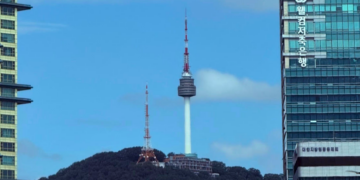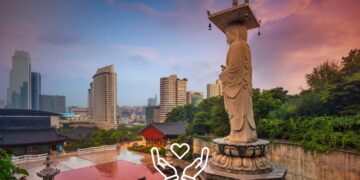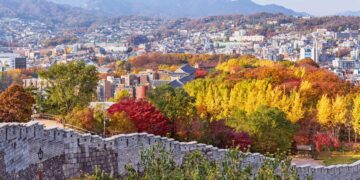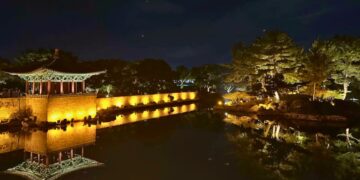Last Updated on 2 years by admin
There are many beautiful sights to explore and enjoy in the North of Seoul, Gangbuk-gu, including the ever poever-popularForest, Hwagyesa Temple, and more!
Gangbuk-gu is one of the 25 districts that make up the South Korean capital Seoul. Its name comes from the fact that it is situated on the northern bank of the Han River. Gangbuk-gu was formed from the nearby Dobong District.
Also known as the district of hope, the suburban neighborhood of Gangbuk-gu acts as the entryway to Bukhansan National Park. The district s home to several popular tourist destinations, the five most well-known of which we will here.
So, are you ready? Let’s begin.
Dream Forest
When visiting northern Seoul, you must prioritize visiting Dream Forest. Being the 4th largest park in Seoul, it draws visitors annually. For the best views, we advise staying in the spring or the fall.
The Northern-Seoul Art Center, a wonderfully tilted structure featuring an observatory, a hall, a book cafeteria, an eatery, a museum and a playing ground for children, is located at the park’s border and this place great for tourists of all ages.
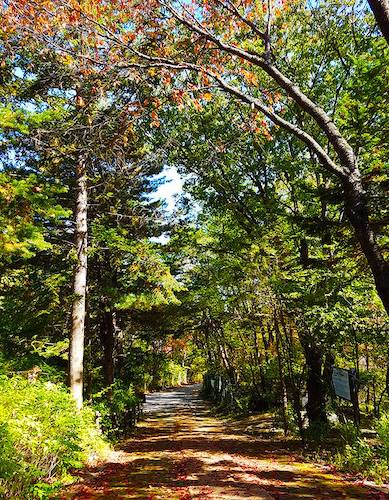
You should enter the observatory to enjoy some magnificent views of the surrounding mountain ranges of Bukhansan, Suraksan and Dobongsan. You can also see the Hangang river and the N-tower from a distance.
The park was already very popular, but after appearing in the action drama “IRIS,” its fame grew even more. And if you love Lee Byung-hu, you should not miss it.
Hwagyesa Temple
The next destination is our today’s list is Hwagyesa Temple. Located at the base of Samgaksan mountain, the temple falls under the Yogre Order of Buddhism in Korea. Monk Shinwol built it for the first time in 1522. After it got devastated by fire, it was reestablished in 1866 during King Gojong’s tenure.
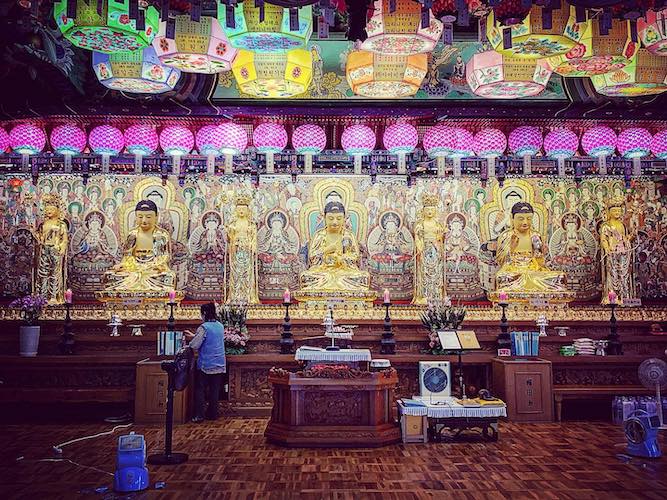
Major attractions inside the temple include:
- Primary sanctuary,
- Temple chime
- Myeongbujeon altar
- Bohwaru tower
- Cheonbulobaekseongjeon shrine
- Samseonggak pavilion,
- Hakseoru tower
There are lodging options inside the temple, just like in many other temples. However, the International Zen Center and Buddhist college make the temple stay program unique.
On the first day of the program, which takes place on Saturdays, you are allowed to explore the entire temple and go on a trek up the nearby Samgaksan mountain.The following day offers a veg breakfast, chanting, tea, Zen meditation and labor. It also includes chanting, meditation, bell-tolling, making rosaries, 108 bows, and veggie dinners.
We advise you to attend the temple stay event if you wish to fully experience the temple.
April Revolutionary Cemetery
The 224 victims of the April 19th Revolution of the 1960s are commemorated in this magnificent cemetery. During your tour of the cemetery, you can witness a conventional gate made of wood, a memorial hall, and numerous burial inscriptions.
The cemetery also has the grave of the famous Yu Yeongbong. Sculptures celebrating the valiant patriots who sacrificed their lives in this movement surround a two-part pond.
However, besides the historical significance of this place, tourists also gather here to appreciate beautiful sunsets and the Autumn foliage. On 10th April, each year, they organize a festival. This is one of the sights in Gangbuk-gu, Seoul that requires a bit of planning ahead if you wish to visit during that time.
Modern History Memorial Hall
Located nearby the April Revolutionary cemetery, this memorial hall celebrates the contemporary heritage of Seoul and South Korea in general. Hence, most of the features are driven towards the concepts of quality, freedom and democracy.
The majority of the writings and descriptions are in Korean; therefore, take a guide if you are unfamiliar with the language.
Yi Jun Tomb
Yi Jun graduated from Korean Empire’s Judiciary Academy (1897–1910). He was sent to the Second Hague Peace Conference in 1907 by king Gojong as a special ambassador along with Yi Sang-seol and Yi Wi-jong to urge the world community against Imperial Japan’s encroachment on Korea. The mission was aimed to make Korea an independent state, but unfortunately, it failed due to his unexpected death.
The tomb is built in his honor, and tourists from various places gather here to pay homage to this legendary figure.
Final Thoughts
North Seoul was previously overlooked by tourists. Fortunately, the above-mentioned sights in Gangbuk-gu, Seoul have garnered a lot of attention over the past few years and have made North Seoul popular today.
8,890 total views, 1 views today



